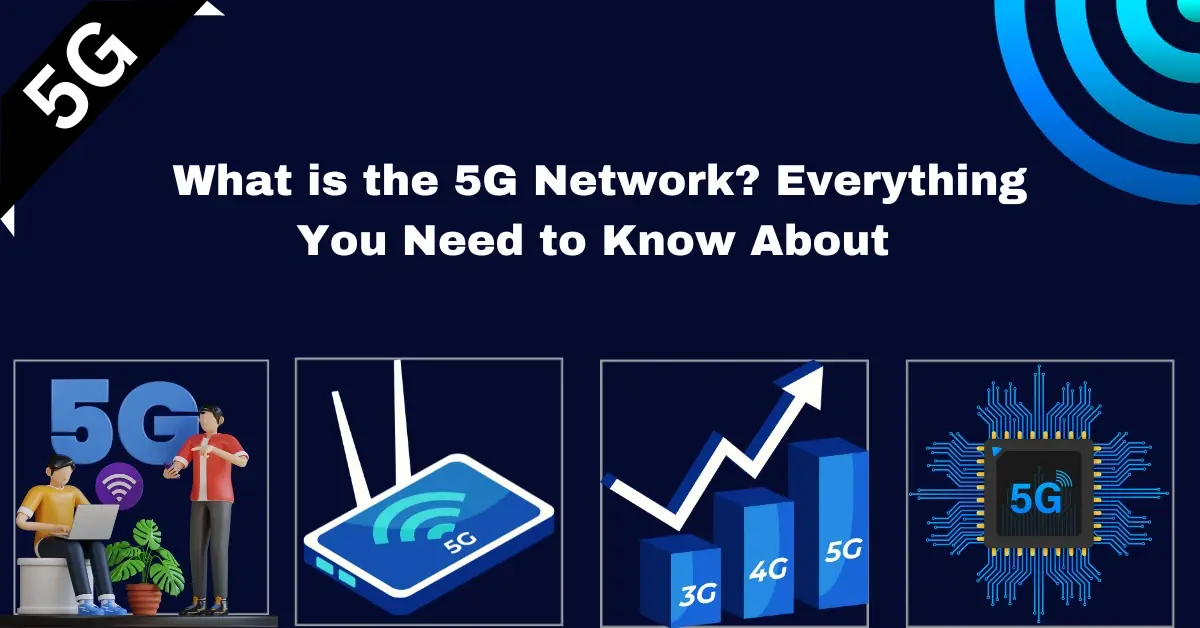The concept of “fifth generation,” or 5G, refers to the newest and most advanced generation of wireless communication technology. Compared to 4G LTE (Long-Term Evolution), it promises to offer much faster speeds, lower latency, more capacity, and improved connectivity, revolutionizing the way we connect to the internet and communicate with one another. This comprehensive reference offers a thorough explanation of 5G, its main characteristics, its impact on numerous businesses, and the potential advantages and difficulties connected with its broad implementation.
Cloud computing and 5G network converge to enable faster, more reliable, and scalable data processing and storage for modern applications.
Key Features of 5G

1. Enhanced Speeds
Comparing 5G networks to 4G LTE, the former provides much higher download and upload rates. It has the potential to offer gigabit-level speeds, which makes it perfect for streaming high-definition media and enabling real-time apps.
2. Low Latency
With regard to the amount of time it takes for data to move between devices and the network, ultra-low latency is one of 5G’s distinguishing characteristics. For real-time responsiveness to be possible, reduced latency is important for applications like augmented reality (AR), virtual reality (VR), and autonomous cars.
3. Greater Capacity
Internet of Things (IoT) devices and densely populated places can both benefit from 5G networks’ increased capacity to accommodate many more devices concurrently. This improved capacity guarantees a dependable and consistent user experience even in congested settings.
4. Improved Reliability
By increasing network reliability, 5G makes it less likely for calls to be dropped or data connections to be interrupted. This is crucial for crucial applications like healthcare and remote operations.
5. Network Slicing
Operators can build virtual, specialized networks within the general 5G infrastructure by using network slicing. To address the particular needs of various applications and sectors, this feature enables the deployment of particular resources and capabilities.
Impact of 5G Across Industries

1. Healthcare
With the use of 5G, doctors can do remote procedures and monitor patients in real-time while afar. Additionally, it promotes the creation of cutting-edge medical equipment and telemedicine programs.
2. Transportation
5G is essential for autonomous vehicles in the transportation sector because it allows them to connect with each other and the infrastructure in real-time, enhancing traffic efficiency and safety.
3. Manufacturing
With real-time monitoring, scheduled service, and automation, smart factories can be used in the manufacturing sector, increasing productivity and lowering downtime.
4. Entertainment
Low latency for online games and high-quality streaming for 4K and 8K video make 5G better for gaming. Applications using augmented and virtual reality gain from 5G’s capabilities as well.
5. Agriculture
5G is essential for the real-time data collection and analysis required for precision agriculture, which enables farmers to manage resources and increase crop yields.
6. Smart Cities
With its assistance for intelligent traffic management, environmental monitoring, and effective public services, 5G is a key component of smart city projects.
Benefits and Challenges of 5G
Benefits:
1. Enhanced User Experience
Online browsing, streaming, and gaming are all improved by faster speeds and lower latency.
2. Economic Growth
By enabling new businesses and industries, 5G technology has the ability to promote economic growth.
3. Innovation
By allowing cutting-edge technologies, 5G promotes innovation across a range of industries, including healthcare and entertainment.
4. IoT Expansion
IoT device proliferation is made possible by 5G networks’ greater capacity, which results in more linked and automated systems.
5. Improved Connectivity in Rural Areas
By giving underserved rural areas access to high-speed internet, 5G technology can help close the digital divide.
Challenges:
1. Infrastructure Investment
Significant investments in new hardware and network upgrades are necessary to build a strong 5G infrastructure.
2. Spectrum Availability
A limiting aspect that necessitates regulatory collaboration is the availability of adequate radio spectrum for 5G implementation.
3. Security Concerns
Concerns about network security are raised as 5G networks grow and become more vulnerable to intrusions.
4. Privacy
As more data is captured and transferred as a result of the growth of IoT devices connected to 5G networks, privacy issues are raised.
5. Health Concerns
Despite the fact that the technology is safe, some people have expressed worries about the potential health implications of exposure to 5G’s higher-frequency waves.
Conclusion
With its higher speeds, lower latency, and enhanced connectivity, 5G technology offers a substantial advancement in wireless communication. Its influence cuts across a range of industries and fosters innovation, automation, and improved user experiences. However, there are obstacles to 5G adoption as well, including infrastructure expenditure, security worries, and privacy issues. The global rollout of 5G networks is still in its early stages, so its full potential has not yet been realized, but it portends a future filled with game-changing technological developments.
FAQs
1. What is 5G technology?
The term “fifth generation,” or 5G, refers to the newest wireless communication technology, which provides higher data rates, reduced latency, and more capacity than its predecessors. By enabling new applications and services, it is intended to fundamentally alter how we connect to the internet and interact.
2. How does 5G differ from 4G LTE?
In compared with 4G LTE, 5G offers a number of important advantages, such as much faster download and upload rates, extremely low latency, increased device capacity, and improved dependability. Due to these advancements, 5G is perfect for use in the Internet of Things (IoT), virtual reality, and augmented reality.
3. What are the potential benefits of 5G for consumers?
Users gain from 5G because it offers a better internet experience with quicker streaming, downloads, and enhanced online gaming. It also provides access to cutting-edge innovations like real-time video conferencing and applications like augmented reality.
4. What challenges are associated with the deployment of 5G networks?
The installation of new hardware and network improvements are among the significant infrastructure investments needed for the deployment of 5G networks. The management of spectrum allotment for 5G use and maintaining the security and privacy of 5G networks are additional issues that must be resolved.
5. Are there any health concerns related to 5G technology?
Some people have voiced worries about possible health impacts from exposure to 5G signals at higher frequencies. However, as 5G functions under recognized safety standards, the scientific community generally agrees that the technology is secure. The safety of wireless technology is carefully monitored and evaluated by regulatory bodies.







